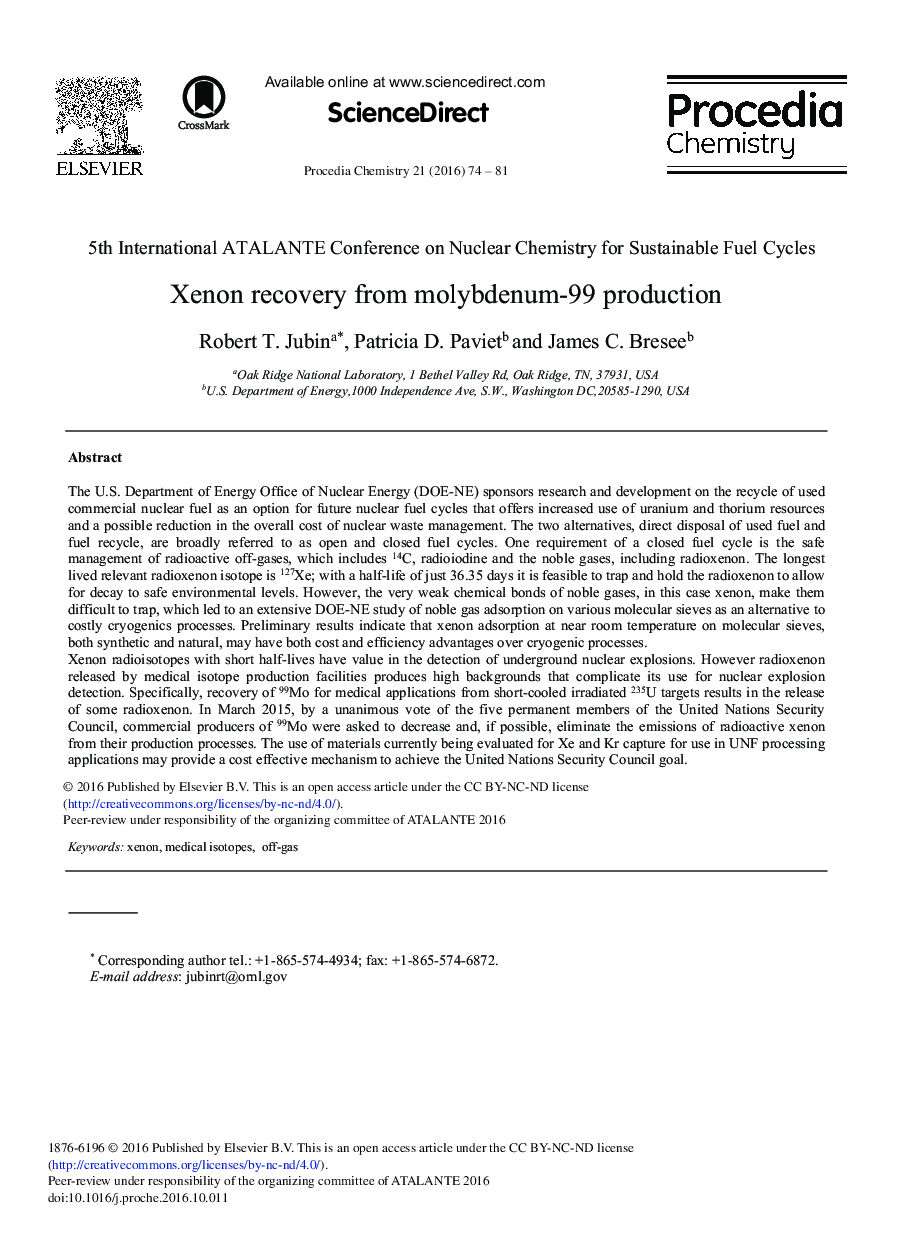| کد مقاله | کد نشریه | سال انتشار | مقاله انگلیسی | نسخه تمام متن |
|---|---|---|---|---|
| 4910912 | 1427898 | 2016 | 8 صفحه PDF | دانلود رایگان |

The U.S. Department of Energy Office of Nuclear Energy (DOE-NE) sponsors research and development on the recycle of used commercial nuclear fuel as an option for future nuclear fuel cycles that offers increased use of uranium and thorium resources and a possible reduction in the overall cost of nuclear waste management. The two alternatives, direct disposal of used fuel and fuel recycle, are broadly referred to as open and closed fuel cycles. One requirement of a closed fuel cycle is the safe management of radioactive off-gases, which includes 14C, radioiodine and the noble gases, including radioxenon. The longest lived relevant radioxenon isotope is 127Xe; with a half-life of just 36.35 days it is feasible to trap and hold the radioxenon to allow for decay to safe environmental levels. However, the very weak chemical bonds of noble gases, in this case xenon, make them difficult to trap, which led to an extensive DOE-NE study of noble gas adsorption on various molecular sieves as an alternative to costly cryogenics processes. Preliminary results indicate that xenon adsorption at near room temperature on molecular sieves, both synthetic and natural, may have both cost and efficiency advantages over cryogenic processes.Xenon radioisotopes with short half-lives have value in the detection of underground nuclear explosions. However radioxenon released by medical isotope production facilities produces high backgrounds that complicate its use for nuclear explosion detection. Specifically, recovery of 99Mo for medical applications from short-cooled irradiated 235U targets results in the release of some radioxenon. In March 2015, by a unanimous vote of the five permanent members of the United Nations Security Council, commercial producers of 99Mo were asked to decrease and, if possible, eliminate the emissions of radioactive xenon from their production processes. The use of materials currently being evaluated for Xe and Kr capture for use in UNF processing applications may provide a cost effective mechanism to achieve the United Nations Security Council goal.
Journal: Procedia Chemistry - Volume 21, 2016, Pages 74-81